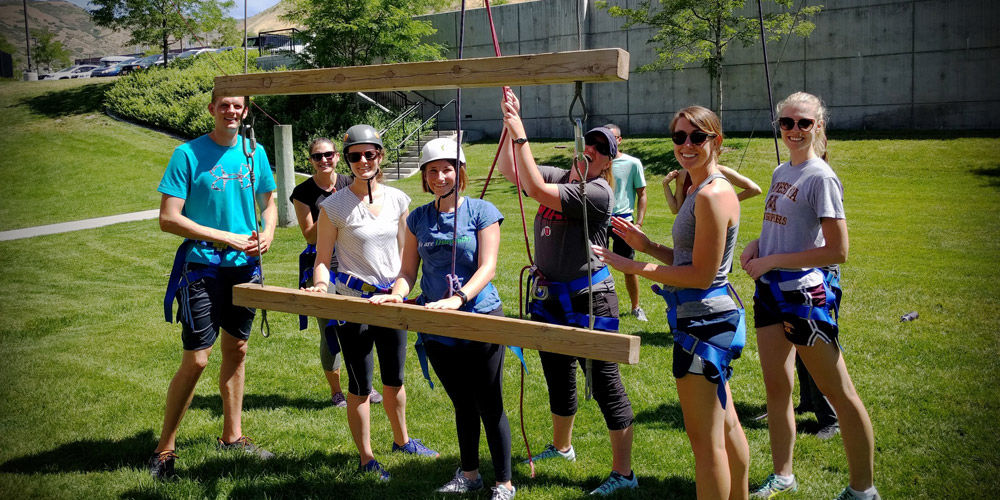About UNI ROPES
UNI ROPES ( Recreation, Observation, Problem solving, Experiential education and Self-esteem) Program is a rich resource with highly trained, outcome-focused facilitators who work to help groups with goal setting, meeting objectives, and team-building.
he UNI ROPES Course taught me to value the process over the outcome. Working together forces people to focus on how to navigate the challenge in front of them—not to worry about where they’ll end up. There aren’t a lot of shortcuts in the course, or in building a team.
Something magical happens during kinesthetic activity. Over the course of four to eight hours on the ROPES course, people tend to loosen up and feel more comfortable. Interactions become more genuine. When we do novel things together, we let our guard down.
#1: To build resilience, build a community.
Health care is hard. We take care of people who are disorganized, people who are angry, and people who don’t want our help. We might not get a lot of positive feedback from patients, which is why building a community with your co-workers is so important.
I know that I play a position on the team. I don’t have all the answers. Instead, I like to ask, “What does the group think?” Some people say that’s not being a strong leader. But leadership doesn’t always mean that you’re out in front, leading the charge, and telling everybody what to do. When people feel comfortable and safe voicing their opinions, they are more likely to contribute—and to do better work.
#2: Leaders create the right environment.
The ROPES course is only successful if the environment is prepared. I get the room ready, turn on the lights, makes sure there are enough chairs for everybody—all the stuff that happens before the group even arrives. If the table is too small or there isn’t a chair for somebody, everyone notices.
People want to know that their leader is looking out for them, paying attention to them, and caring about them. To me, the biggest part of leadership is making sure things are taken care of so that the group can do the work. Then, you check in: How are you doing? Are you in a good place to contribute to the group? Can you do the job that we hired you to do?
"The responsibility of leadership is not to come up with all the ideas but to create an environment in which great ideas thrive.” Simon Sinek, Leaders Eat Last
As a leader or facilitator, you shape the experience. You create the emotional environment. On the ROPES Course, people might think they’re just playing this silly game. But then they have an awesome time and say, “How did that happen?” Because your leader shaped it. They made it happen.
#3: Work hard for each other.
It’s so important to understand your team. It’s about support and trust—just like on the ROPES Course. Now I have 40 people on my team—I manage Art, Recreation, and Music Therapists, along with Challenge Course Facilitators—so I have to find opportunities to connect with them, support them, and meet their needs. If you truly are a team, carve out time to come together and get to know each other. That’s how people build connections. That’s how real community is formed.
That’s how I see my job as a leader: to create community. It extends so far. When someone comes in early for someone else and goes the extra mile, they do it because they relate with their co-workers. When you’re having a bad day, you can talk about it with the person who sits at the desk next to you. It’s hard to be emotionally available, but it’s what we all need. We work hard for the patients, but we also work hard for each other.
Originally published May 2018
Holly Badger
We all make lots of mistakes early on in our careers. Hospitalist and mentorship expert Valerie Vaughn sets us up for success by sharing her expertise on how to take control of your long-term career path.
Exceptional care only happens with an engaged team. Jared Wrigley should know: he has led three diverse teams at U of U Health—first, Westridge Health Center, and now, South Jordan’s primary care team and Parkway Health Center. Here are three effective ways he engages everyone on the team.
Alison Flynn Gaffney defines herself as a servant leader. As U of U Health’s Executive Director of Service Lines, Ancillary and Support Services, she brings more than two decades of experience in strategic, operations, and consulting roles at academic medical centers and community hospitals. Here are Alison’s expert tips for effective servant leadership.
